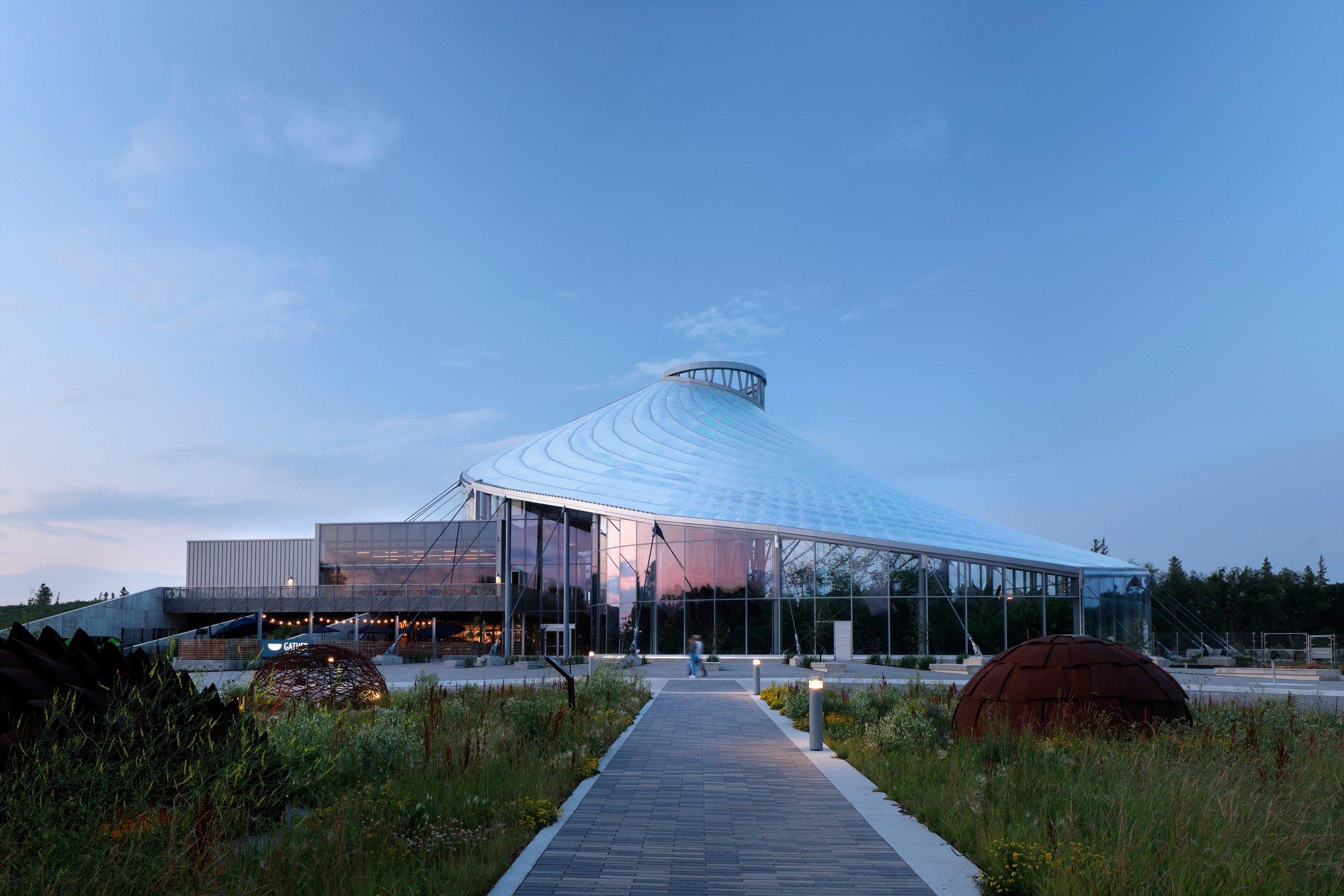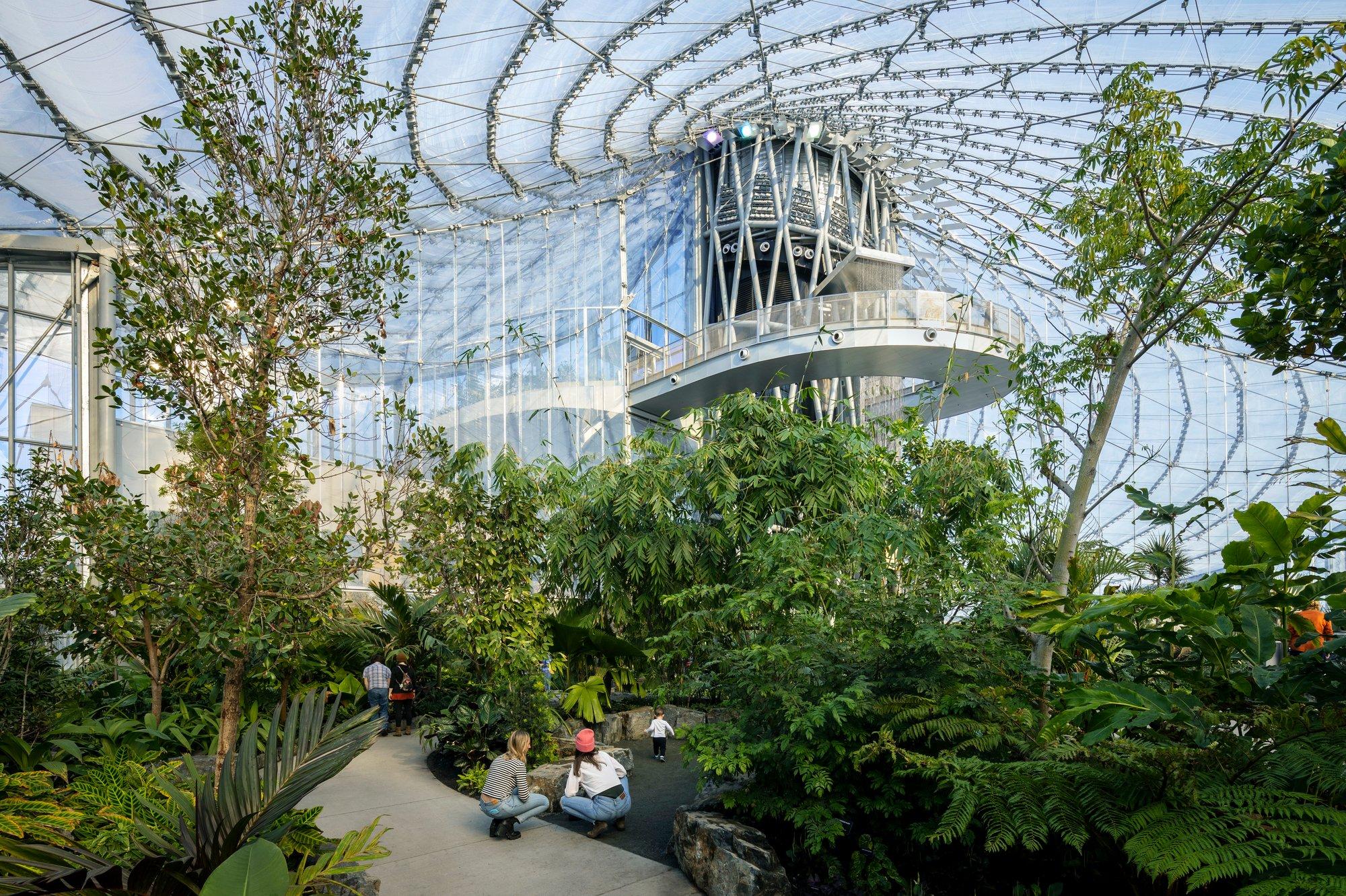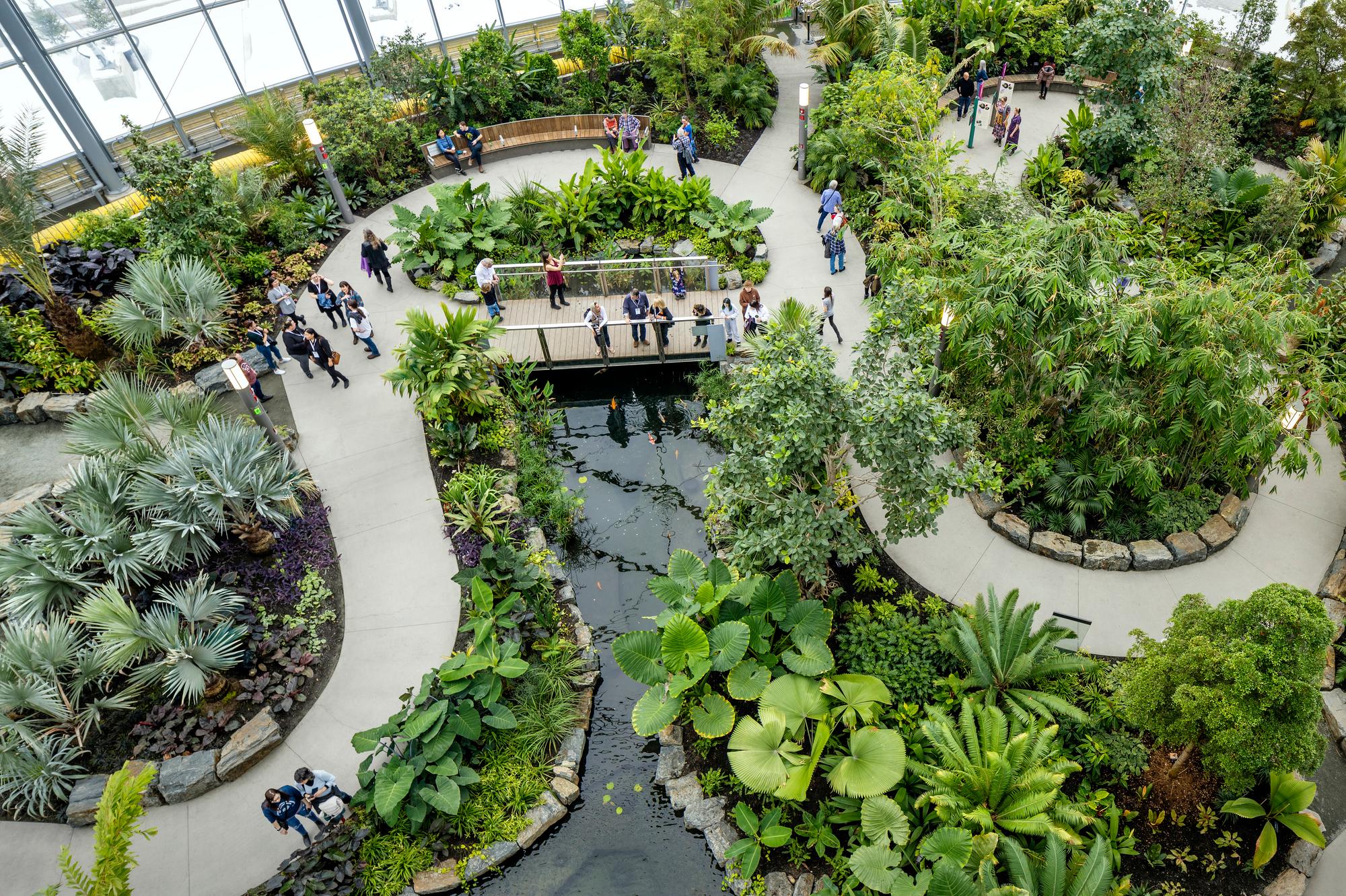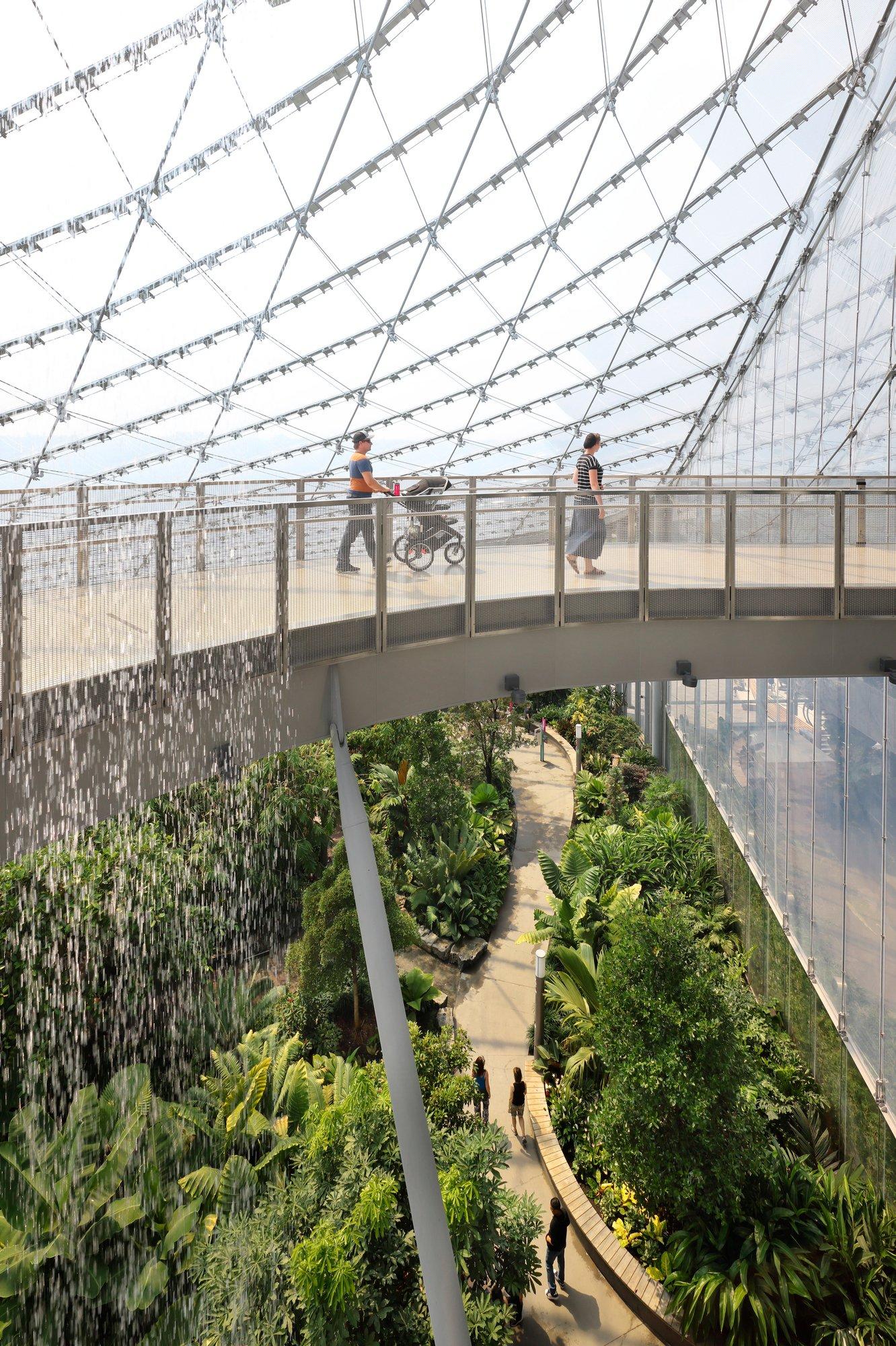
A Plant Lover’s Paradise
A spiralling roof, a 60-foot waterfall, “dinosaur trees”—how architects breathed new life into Winnipeg’s The Leaf
Share
April 5, 2024
Around the turn of the 20th century, it became trendy for North American cities to build conservatories to show off tropical plant species, no matter how untropical the locale. Winnipeg’s version was the Palm House, a botanical garden in Assiniboine Park filled with exotic foliage. But by 2009, the once-fashionable brick-and-concrete structure had aged into a dilapidated energy hog. When the Assiniboine Park Conservancy asked Winnipeggers how to improve the park, they said: keep the plants, replace the building and give us a winter escape.
After coming aboard in 2012, KPMB Architects and Architecture49 hatched a plan for the retooled, year-round, tourist-attracting conservatory that would become the Leaf. The $130-million project now houses four indoor plant biomes and more than 12,000 trees, shrubs and flowers from around the world—all within an 84,000-square-foot complex whose overstructure resembles the Fibonacci spiral, a naturally occurring pattern that appears in sunflowers, seashells and hurricanes.

Creating a tropical-friendly greenhouse in a climate that can drop to 40-below was a task. An all-glass structure would have been too heavy, so the architects instead looked into ethylene tetrafluoroethylene, or ETFE, a lightweight plastic built into Vancouver’s BC Place stadium. For inspiration, conservancy staff visited the U.K.-based Eden Project, a collection of ETFE biomes that house one of the largest indoor rainforests on Earth. The architects looked to Kazakhstan’s Khan Shatyr Entertainment Centre, the tallest tensile structure in the world.
ETFE is a difficult material to install when it’s cold out. As a result, construction on the Leaf began in the spring of 2017 and didn’t wrap until nearly five and a half years later. The team also had the Austrian-Italian cable company Teufelberger-Redaelli supply a custom spiralling cable-net, an intricate woven structure that holds the whole thing up.
There’s plenty of excitement below roof level, too: a new butterfly garden, a restaurant that serves produce plucked straight from the grounds and a 60-foot-tall waterfall designed by Dan Euser, the Canadian artist behind the water feature at the September 11 Memorial in New York City. The Leaf’s splashy redesign hasn’t just boosted attendance from humans. Despite the staff’s best efforts, every so often, international stowaways in the form of insects and lizards arrive in the conservatory. Some are allowed to stay, while others are rehomed at another nearby attraction: the Assiniboine Park Zoo.

